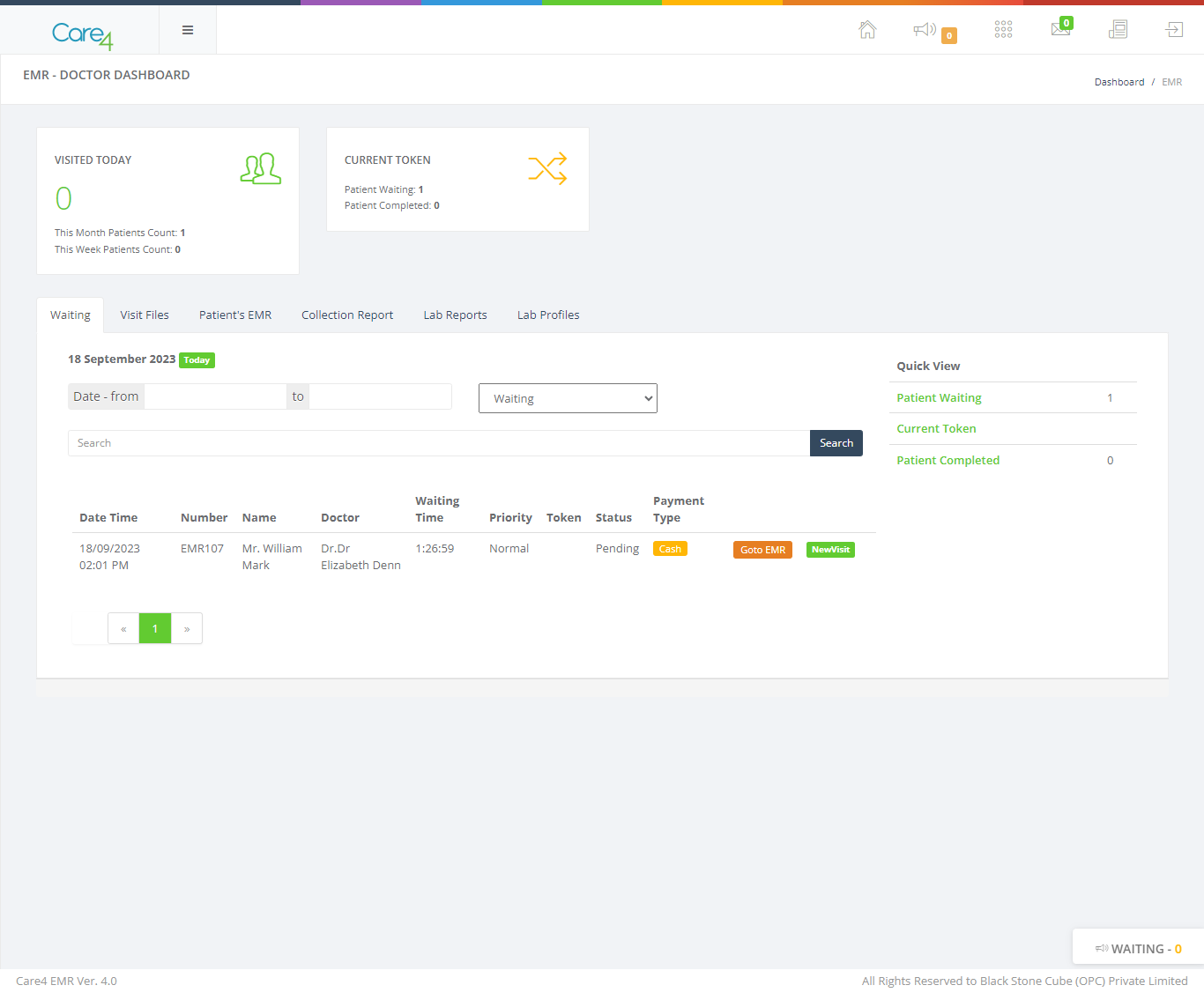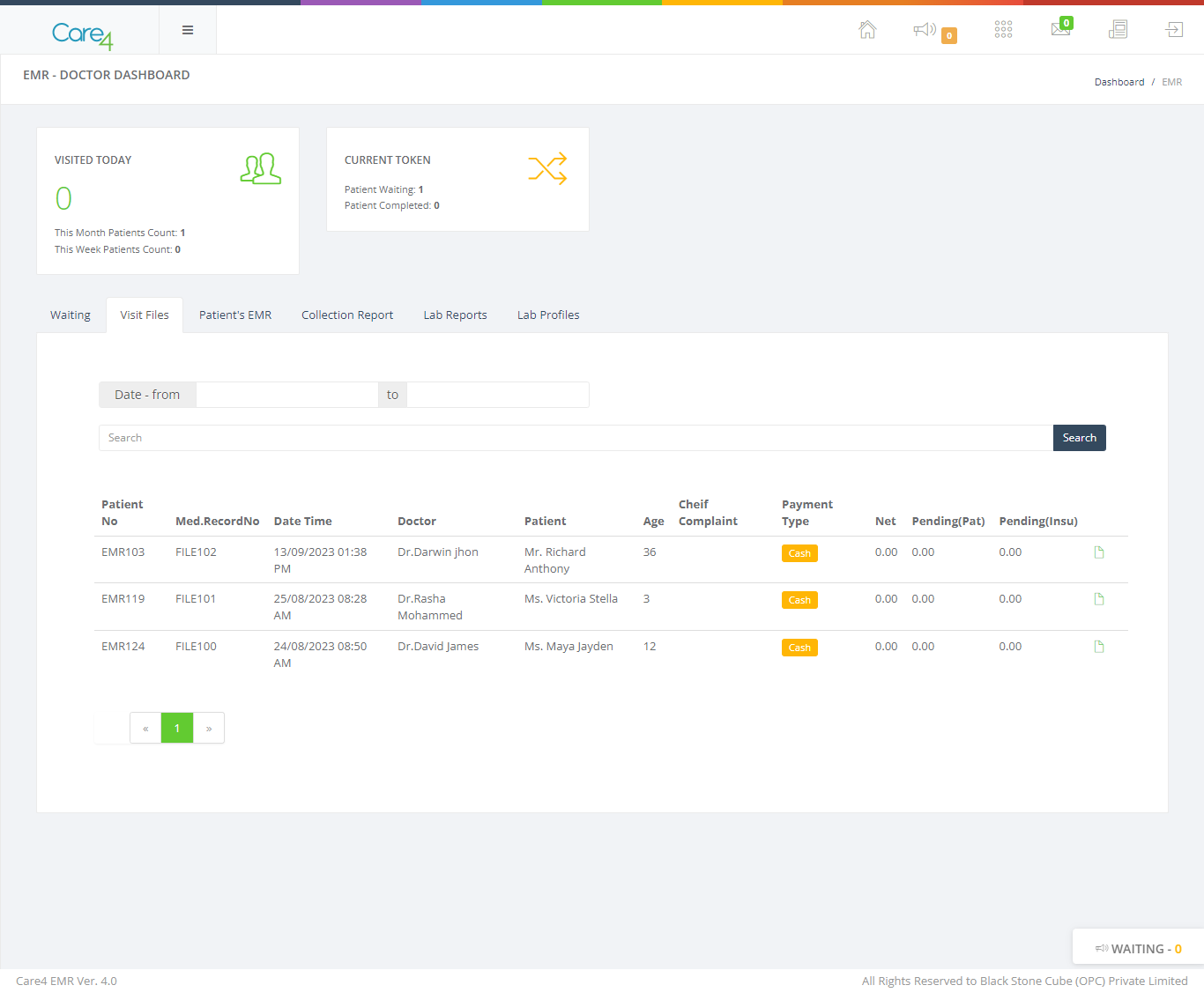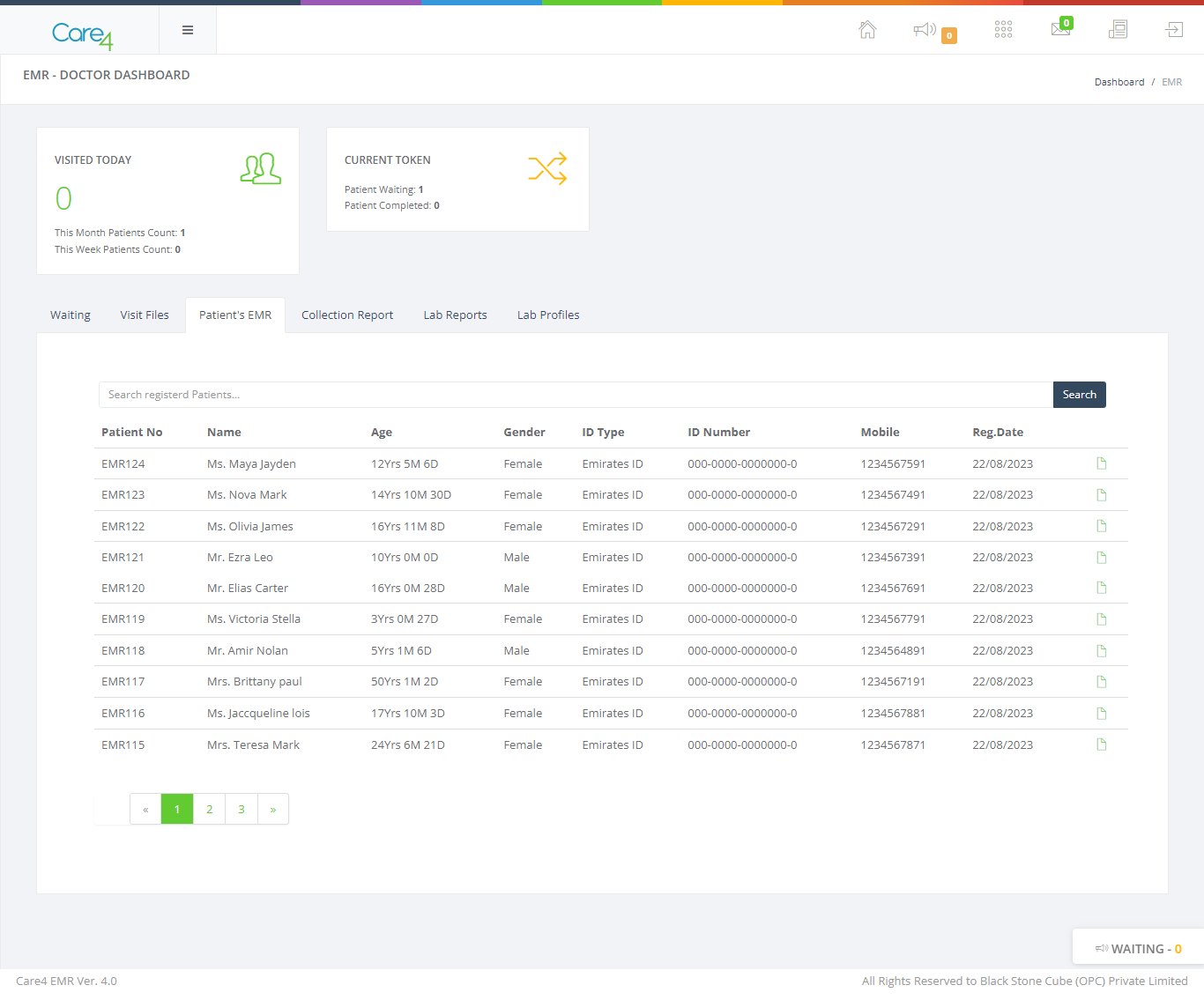ELECTRONIC MEDICAL RECORDS(EMR)
A patient ELECTRONIC MEDICAL RECORDS dashboard is a graphical user interface that provides healthcare providers with a consolidated view of a patient's medical information.
The dashboard typically includes information such as:
• Patient demographics
• Current medications
• Past medical history
• Vital signs
• Laboratory results
• Imaging studies
• Problem list
• Care plan
The dashboard can be customized to display the information that is most relevant to the healthcare provider. For example, a primary care physician may want to see the patient's current medications and vital signs, while a specialist may want to see the patient's past medical history and laboratory results.

The dashboard can be used to track a patient's progress over time and to identify any potential problems. For example, if a patient's vital signs are outside of the normal range, the dashboard can alert the healthcare provider to this. The dashboard can also be used to coordinate care between different healthcare providers.
Visit Files

Visit Files: The visit file is typically stored in the hospital's electronic medical record (EMR) system. This allows healthcare providers to easily access the patient's information from any computer in the hospital. This information can include the patient's medical history, the reason for the visit, the tests and procedures that were performed, the medications that were prescribed, and the discharge diagnosis.
